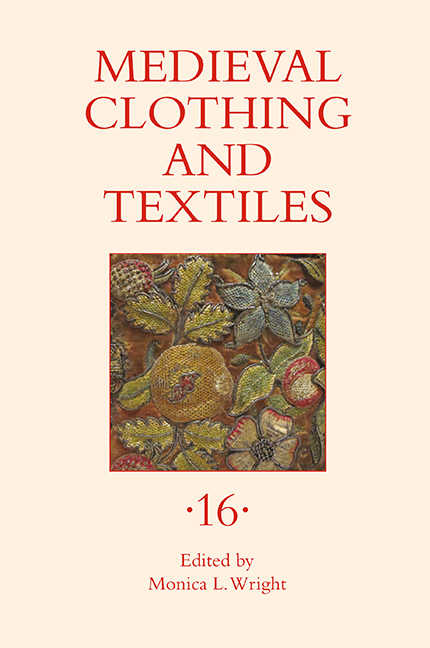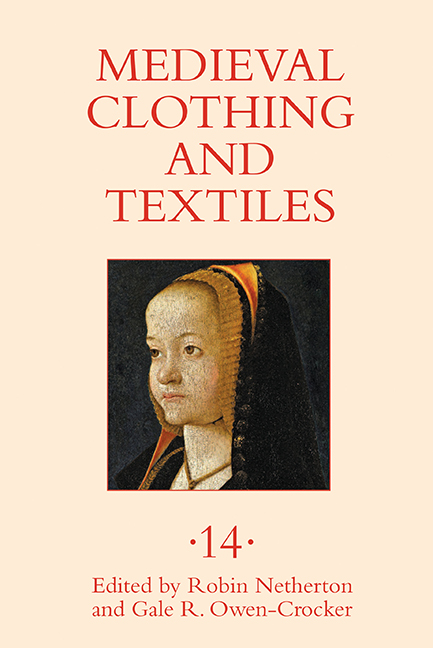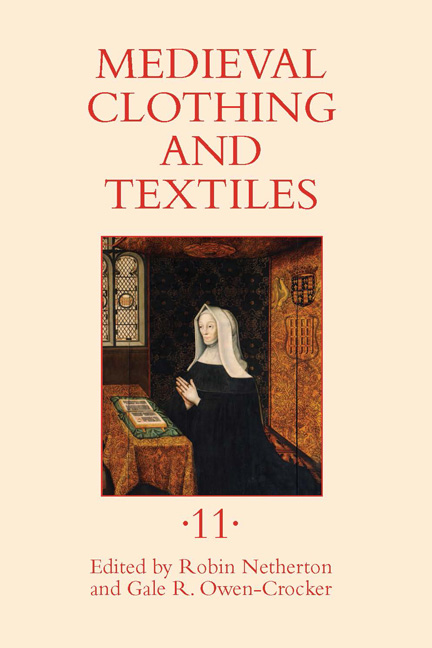13 results in Medieval Clothing and Textiles

Medieval Clothing and Textiles
-
- Published by:
- Boydell & Brewer
- Published online:
- 10 May 2024
- Print publication:
- 14 May 2024

Medieval Clothing and Textiles
-
- Published by:
- Boydell & Brewer
- Published online:
- 17 December 2023
- Print publication:
- 04 July 2023

Medieval Clothing and Textiles 7
-
- Published by:
- Boydell & Brewer
- Published online:
- 18 February 2023
- Print publication:
- 16 June 2011

Medieval Clothing and Textiles 10
-
- Published by:
- Boydell & Brewer
- Published online:
- 14 February 2023
- Print publication:
- 17 April 2014

Medieval Clothing and Textiles 12
-
- Published by:
- Boydell & Brewer
- Published online:
- 21 May 2021
- Print publication:
- 15 July 2016

Medieval Clothing and Textiles 15
-
- Published by:
- Boydell & Brewer
- Published online:
- 31 March 2021
- Print publication:
- 17 May 2019

Medieval Clothing and Textiles 16
-
- Published by:
- Boydell & Brewer
- Published online:
- 27 March 2021
- Print publication:
- 17 April 2020

Medieval Clothing and Textiles 13
-
- Published by:
- Boydell & Brewer
- Published online:
- 12 August 2020
- Print publication:
- 19 May 2017

Medieval Clothing and Textiles
-
- Published by:
- Boydell & Brewer
- Published online:
- 13 July 2019
- Print publication:
- 20 April 2018

Medieval Clothing and Textiles 2
-
- Published by:
- Boydell & Brewer
- Published online:
- 14 February 2019
- Print publication:
- 20 April 2006

Medieval Clothing and Textiles 11
-
- Published by:
- Boydell & Brewer
- Published online:
- 05 December 2015
- Print publication:
- 16 April 2015

Medieval Clothing and Textiles 9
-
- Published by:
- Boydell & Brewer
- Published online:
- 05 July 2013
- Print publication:
- 18 July 2013

Medieval Clothing and Textiles 8
-
- Published by:
- Boydell & Brewer
- Published online:
- 05 February 2013
- Print publication:
- 19 July 2012

